Are you a homeowner and worried that your sump pump may not be working properly? Although checking the condition of your sump pump’s discharge line is a relatively simple task, it can go overlooked if you don’t know what to look for. Knowing how to check for potential issues with this important component of your home’s plumbing system will give you peace of mind when assessing its overall performance.
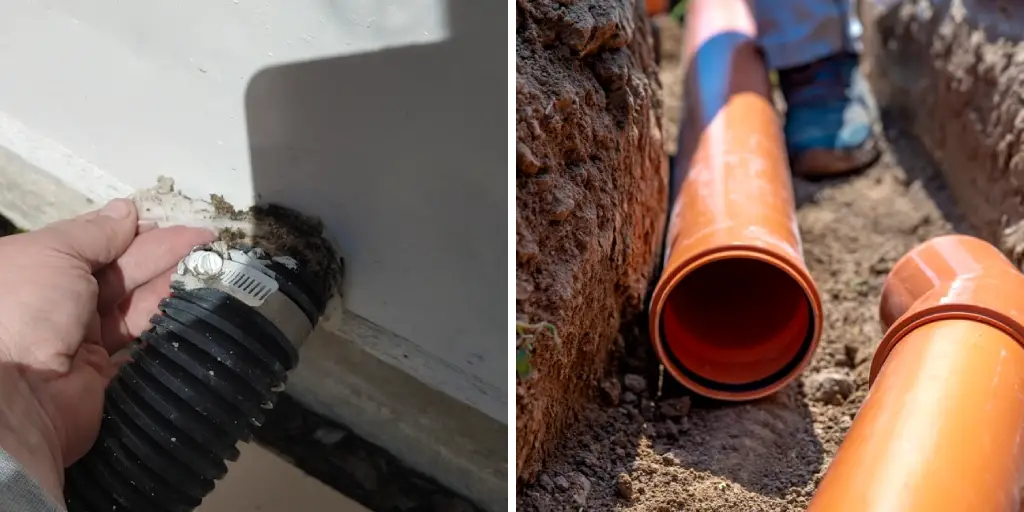
In this blog post, we’ll provide step-by-step instructions on how to check sump pump discharge line so that you can identify any potential issues quickly and easily.
Why May You Want to Check Sump Pump Discharge Line?
1 . To Ensure the Proper Functioning of Your Sump Pump
A sump pump is an essential component of any basement waterproofing system. It helps to keep your basement dry by removing excess water that may accumulate due to rain, floods, or natural groundwater seepage.
A malfunctioning sump pump can lead to a flooded basement and expensive repairs. Therefore, it is crucial to regularly check and maintain your sump pump, including its discharge line, to ensure it is functioning properly.
2 . To Prevent Clogging and Blockage
The discharge line of a sump pump is responsible for carrying the water from the sump pit to a safe location away from your home’s foundation. However, over time, this line can become clogged with debris, causing blockages and preventing the water from being properly discharged. Regularly checking and clearing any clogs in the discharge line can prevent potential issues and keep your sump pump running smoothly.
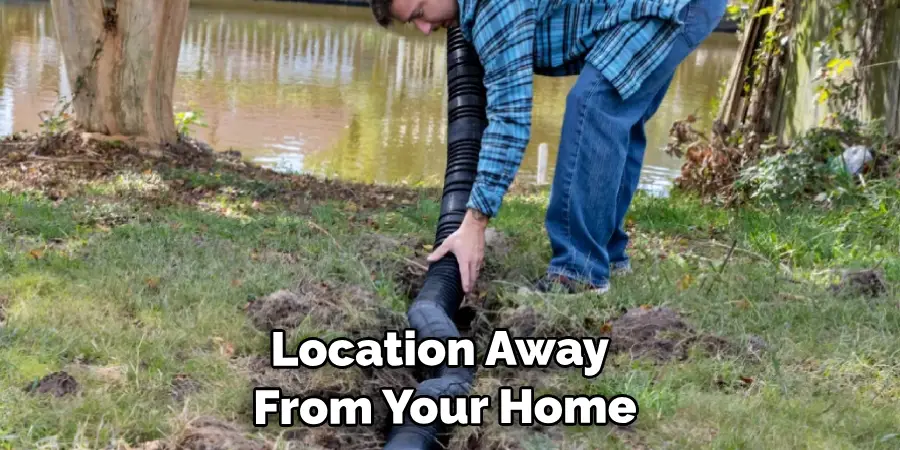
3 . To Identify Any Leaks or Damage
The discharge line is constantly exposed to water, which can cause wear and tear over time. Additionally, external factors such as freezing temperatures, tree roots, or shifting soil can also cause damage to the discharge line. By checking the discharge line regularly, you can identify any potential leaks or damage and address them before they escalate into major problems.
4 . To Comply with Local Regulations
Many municipalities have regulations in place regarding sump pump discharge lines. These regulations may specify the type of materials that should be used for the line, its location, and where the water should be discharged. Regularly checking your discharge line can ensure that you are complying with these regulations and avoid any fines or penalties.
How to Check Sump Pump Discharge Line in 5 Easy Steps
Step 1: Locate the Discharge Line
The first step to checking your sump pump discharge line is to locate it. The discharge line is a pipe that connects your sump pump to the outside of your home. It is typically located near the foundation of your house or in the basement.
Step 2: Check for Clogs or Debris
Once you have located the discharge line, visually inspect it for any clogs or debris. Over time, the discharge line can become clogged with dirt, leaves, and other debris which can cause your sump pump to malfunction.
Step 3: Remove Debris
If you find any clogs or debris in the discharge line, use a garden hose to remove them. Simply insert the hose into the discharge line and turn on the water to flush out any obstacles. This will help ensure that your sump pump can properly drain water away from your home.
Step 4: Test the Pump
After checking for clogs and removing any debris, it’s important to test your sump pump to make sure it is functioning correctly. You can do this by pouring a bucket of water into the sump pit. As the water level rises, the sump pump should turn on and start pumping out the water.
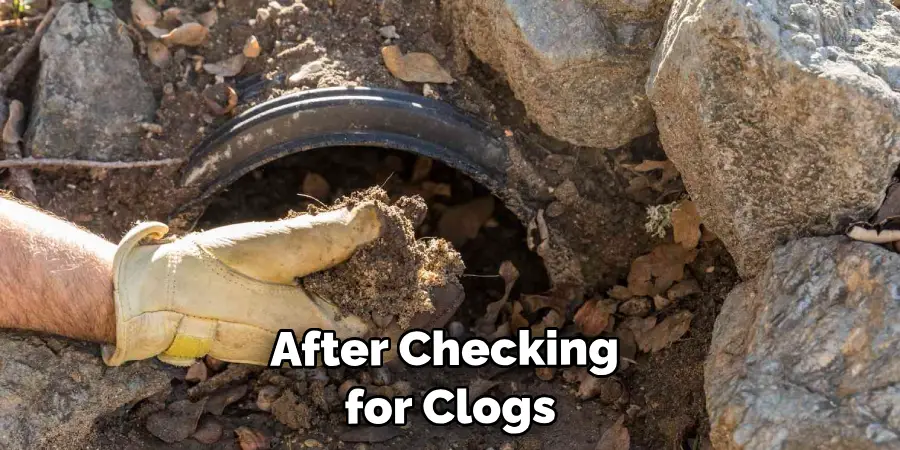
Step 5: Check for Proper Discharge
As the sump pump is running, make sure to check that the discharge line is properly directing water away from your home’s foundation. If you notice any leaks or water pooling near your foundation, there may be an issue with the discharge line and it should be repaired or replaced immediately.
By following these 5 easy steps, you can ensure that your sump pump discharge line is functioning properly and protecting your home from potential water damage. It is important to regularly check and maintain your sump pump to prevent any issues and keep your home safe and dry. So, make sure to add this task to your regular home maintenance checklist.
Additional Tips for Maintaining Your Sump Pump Discharge Line
1 . Do Not Ignore Strange Noises
If your sump pump discharge line is making strange noises, do not ignore them. These noises could be a sign that there is an issue with your sump pump or the discharge line itself. It’s important to address these noises as soon as possible before they turn into bigger problems.
2 . Check for Clogs Regularly
Clogs are one of the most common issues with sump pump discharge lines. Make sure to check for clogs regularly, especially after heavy rainfall or storms. Clearing out any debris or obstructions will ensure that your sump pump can properly remove water from your basement.
3 . Inspect the Discharge Line Exit Point

The exit point of your sump pump discharge line is just as important as the line itself. Make sure to regularly inspect this area for any signs of damage or blockages. It’s also a good idea to keep this area clear of any plants, debris, or other obstructions to ensure proper water flow.
4 . Test Your Sump Pump
It’s important to test your sump pump at least once a year to make sure it is working properly. You can do this by pouring water into the sump pit and making sure the pump turns on and removes the water effectively.
5 . Consider Installing a Backup Sump Pump
In case of power outages or other issues, having a backup sump pump can provide peace of mind. Consider installing one if you live in an area prone to severe storms or power outages.
6 . Keep the Discharge Line Sloped Away from Your Home
Proper drainage is key for a functioning sump pump discharge line. Make sure that the line is sloped away from your home to prevent any water from pooling and potentially causing damage. Also, avoid attaching it to your home’s plumbing system as this can cause backups.
7 . Regularly Check for Leaks
Leaks in the discharge line can cause water to seep back into your basement and defeat the purpose of having a sump pump. Regularly check for leaks and address any issues immediately. Also, consider investing in a high-quality discharge line to prevent future leaks.
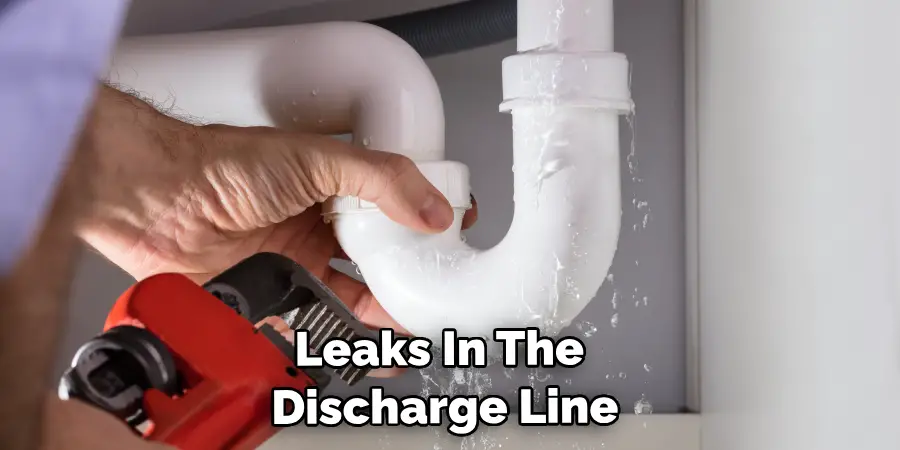
8 . Keep the Sump Pump and Discharge Line Clean
Cleanliness is important for the overall health of your sump pump and discharge line. Regularly clean both to remove any built-up debris or sediment that can cause clogs or other issues. This will also help prolong the lifespan of your sump pump.
9 . Know When to Replace Your Sump Pump
No matter how well-maintained your sump pump is, it will eventually need to be replaced. Keep an eye out for signs of wear and tear such as strange noises or frequent malfunctions. It’s always better to replace your sump pump before it completely fails.
10 . Consult a Professional if You Encounter Major Issues
If you encounter major issues with your sump pump or discharge line, do not hesitate to consult a professional. These issues may require more extensive repairs or replacements, and a professional will have the knowledge and expertise to handle them properly.
By following these additional tips for maintaining your sump pump discharge line, you can ensure that your basement stays dry and your sump pump continues to function effectively. Remember, proper maintenance is key for a well-functioning sump pump system.
Frequently Asked Question
What Precautions Should I Take Before Checking My Sump Pump Discharge Line?
Before checking your sump pump discharge line, it is important to take certain precautions to ensure your safety and prevent damage to the pump. Here are some tips to keep in mind:

- Always disconnect the power supply to the sump pump before beginning any maintenance or inspection.
- Wear protective gear, such as gloves and safety glasses, to avoid any potential hazards.
- Make sure the area around the sump pump is clear of debris and clutter.
- If you have a backup sump pump, make sure it is also disconnected before checking the discharge line.
How Often Should I Check My Sump Pump Discharge Line?
It is recommended to check your sump pump discharge line at least once a year, preferably before the rainy season or when heavy storms are expected. However, it is always better to be proactive and check it more frequently if you notice any signs of potential issues.
What Are Some Signs That My Sump Pump Discharge Line Needs to Be Checked?
There are several indicators that may suggest your sump pump discharge line needs to be checked. These include:
- Unusual noises coming from the sump pump or discharge line
- Water not draining properly from the sump pit
- Visible leaks or cracks in the discharge line
If you notice any of these signs, it is important to check your sump pump discharge line as soon as possible to avoid any potential malfunctions.
How Do I Check My Sump Pump Discharge Line?
To check your sump pump discharge line, follow these steps:
- Disconnect the power supply to the sump pump.
- Remove any debris or obstructions from the sump pit and discharge line.
- Inspect the discharge line for any cracks or damage.
- If there are no visible issues, pour a bucket of water into the sump pit and observe how it drains through the discharge line.
- If the water does not drain properly, there may be a clog in the line that needs to be cleared.
Can I Check My Sump Pump Discharge Line Myself?
Yes, you can perform a basic inspection of your sump pump discharge line yourself. However, if you notice any major issues or are unsure about how to proceed, it is best to seek professional help.
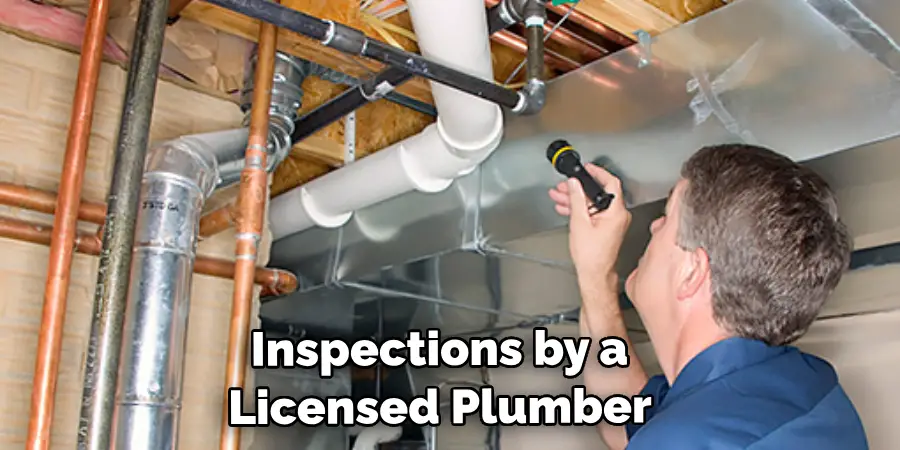
Additionally, regular maintenance and inspections by a licensed plumber are recommended to ensure the proper functioning of your sump pump and discharge line. Remember, a properly functioning sump pump and discharge line can save you from potential water damage and costly repairs in the future. So make sure to check your sump pump discharge line regularly and address any issues promptly.
Conclusion
To summarize, when it comes to keeping your sump pump in good working order, a regular check-up of the sump pump discharge line is important to ensure that everything is running smoothly. Inspecting both the interior and exterior of your line should be done regularly, checking for any build-up or blockage inside and outside that can potentially cause repairs or replacements.
Having knowledge and understanding of how to check sump pump discharge line can help prevent further disaster mitigation costs from any flooding or other possible damages. So don’t wait, get out there and start doing a regular inspection today. Save yourself some headache down the road by taking these simple preventative measures now!

